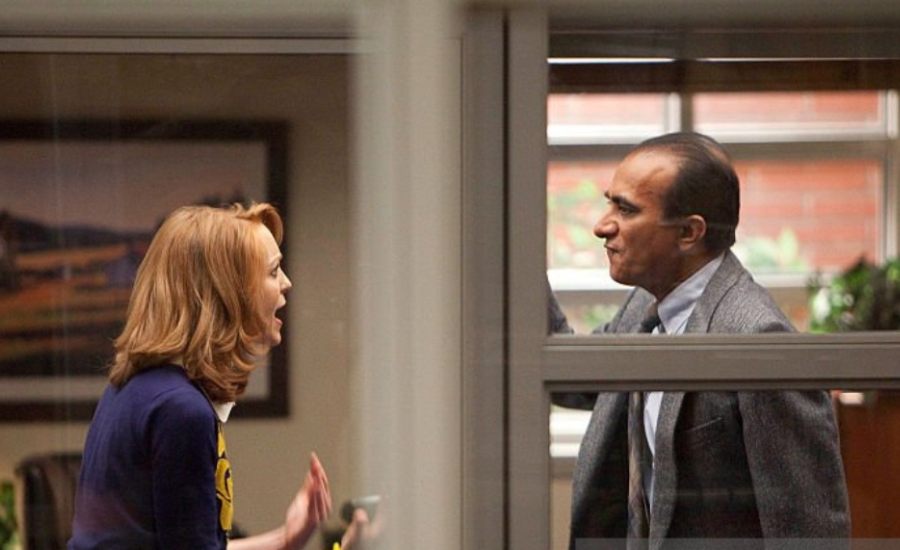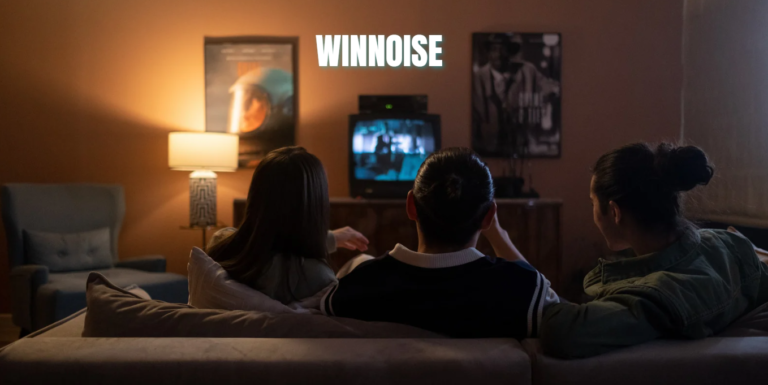Emma Argues With Principal Figgins
Emma and Principal Figgins found themselves at odds due to divergent perspectives on school policies, particularly involving student participation in decision-making processes. Emma advocated for students having a voice, believing their input was crucial. In contrast, Principal Figgins emphasized adherence to regulations for smooth operations. Their disagreements aimed at finding a resolution that balanced student involvement with legal compliance. When Emma Pillsbury, the school counselor, aligned with Principal Figgins, discussions shifted to students’ future and authority. Emma Pillsbury passionately presented evidence, challenging rigid policies and proposing positive changes for the education system. Her focus centered on students’ well-being and independence, prompting a reevaluation of established norms. While Principal Figgins initially favored the old leadership style, the argument culminated in recognition and effective communication. Together, they initiated policy reassessment, crafting new guidelines for the betterment of the education system.
Who are Emma Pillsbury and Principal Figgins?
In the world of “Glee,” Emma Pillsbury and Principal Figgins stand out as central characters, each bringing distinct values and perspectives to the school’s dynamic. Their interactions, particularly the scene where Emma confronts Principal Figgins, play a crucial role in unraveling the narrative of “Glee.” These moments provide insights into the characters’ individuality and contribute significantly to the overall storyline, offering viewers a deeper understanding of the intricate relationships and values at play within the school’s ecosystem.
1. Emma Pillsbury
Emma, the caring counselor at Maplewood High School, is recognized for her unwavering dedication, strong ethics, and empathetic nature. Her ethical principles serve as a guiding force, promoting trust and integrity throughout the school. Emma’s authentic empathy creates a nurturing environment where students feel comfortable sharing their concerns, fostering both personal and academic growth. Going beyond her official role, Emma customizes her support for each student, ensuring a well-rounded approach. Serving as a moral compass, she contributes to a positive culture at Maplewood. In essence, Emma’s significant contributions establish her as an essential presence, embodying values of ethics, compassion, and dedication within the school community.
Participation in the discussion
Emma engages in heartfelt discussions with Principal Figgins, passionately championing the cause of the Glee club. Her advocacy is rooted in a deep commitment to her students’ artistic development and overall well-being. Emma fervently argues that involvement in the Glee club not only adds artistic richness to students’ lives but also significantly contributes to their personal growth. Going beyond the immediate concerns of the club, she highlights its broader impact on students’ overall well-being and underscores the positive influence of arts education. Emma’s passionate advocacy reflects her unwavering dedication to fostering a nurturing environment where students can flourish both academically and creatively.
2. Principal Figgins
Principal Figgins takes on the authoritative role in school administration, emphasizing the importance of safeguarding the school’s reputation and managing the budget effectively. His consistent prioritization of these concerns often leads to conservative decision-making. Figgins is dedicated to upholding the school’s positive image in the community, highlighting his commitment to maintaining a strong standing. Simultaneously, his stringent approach to budget management reflects his responsibility in ensuring the institution’s financial stability. Figgins’ character illustrates the delicate balance administrators navigate between fiscal responsibility and the broader reputation of the school, portraying the challenges inherent in leadership roles within the administrative sphere.
Participation in the discussion
The clash between Principal Figgins, the face of administrative decisions, and Emma, the champion for students, vividly portrays the ongoing struggle between prioritizing students’ needs and administrative concerns. Figgins, driven by worries about the school’s image and budget, frequently clashes with Emma’s fervent advocacy for students’ well-being and artistic endeavors. This conflict highlights a broader challenge within the educational system—a constant juggling act between administrative duties and meeting the unique needs of students. The face-off between Figgins and Emma becomes a small-scale representation of the larger difficulty in harmonizing institutional priorities with a student-centered approach.
Why does Emma Argues with Principal Figgins?
The Root of the Dispute
The clash between Emma and Principal Figgins at Maplewood High School, which gained considerable attention, revolves around Emma’s proposal for a novel teaching method centered on interactive learning and student engagement. This conflicted with Principal Figgins’ inclination towards structured and time-tested methodologies.
Principal Figgins’ Firm Stand
As a seasoned figure in Maplewood School’s educational administration, Mr. Figgins steadfastly champions discipline principles and traditional teaching methods. He argues for their predictability, stability, and proven effectiveness. Stressing the significance of standardized testing, he views it as a crucial tool for evaluating both teachers and students.
Emma Pillsbury’s Advocacy
In contrast to Principal Figgins, Emma advocates for a student-centered and dynamic teaching approach. She underscores the importance of fostering critical thinking, accommodating diverse learning styles, and criticizes the traditional educational system for its failure to fully engage students.
Essence of the Argument
At its core, the disagreement centers on the role of a teacher and the purpose of education. Emma envisions education as a holistic process, aiming to nurture creative and well-rounded individuals. Her role as an instructor extends beyond traditional teaching to guide students in independent thinking and work.
Guidelines for Resolving the Argument: Emma vs. Principal Figgins
Recognition of the Issue
When dealing with a serious matter like Emma’s argument with Principal Figgins, it’s crucial for both parties to acknowledge and understand each other’s concerns. Taking the time to listen and comprehend differing perspectives forms the foundation for finding effective solutions.
Open Communication
The key to resolving misunderstandings lies in open and honest communication. Engaging in sincere conversations creates a pathway for mutual respect and understanding, fostering a positive and productive dialogue between the involved parties.
Reevaluation of Policies
A necessary step in creating a safe and supportive environment is revisiting existing policies while considering students’ needs. Prioritizing the well-being and safety of students ensures that policies align with the evolving dynamics of the school.
Development of New Proposals
For the successful implementation of modified policies, creating a clear and visible proposal becomes beneficial. This proposal outlines specific steps and actions needed to implement the new policies, assigning responsibilities to different stakeholders.
Enhancing the Educational System
In the process of improving the education system, schools should set an example by creating a supportive environment where every student’s voice is heard. This approach establishes a foundation for positive change and demonstrates a commitment to the overall betterment of the educational experience.
Educational Norms and Principles: A Holistic Approach
Emma and Principal Figgins clash because Figgins didn’t consider educational norms and policies, creating a source of disagreement between them.
- Prioritize students’ development and well-being, making them the central focus of the educational approach.
- Create policies tailored to address the diverse needs of students, considering their backgrounds.
- Uphold equality as a fundamental norm, ensuring every student has equal rights and opportunities to express their views.
- Grant teachers the freedom to exercise professional judgment in the classroom, allowing flexibility in teaching methods.
- Encourage clear and open communication between teachers, students, and stakeholders.
- Build trust through transparent dialogue, recognizing that open communication is essential for a successful educational experience for all.
Key Takeaways
Emma’s unwavering commitment to environmental stability successfully secured approval for her club, showcasing the potential for impactful change when students rally behind a shared cause. Conversely, Principal Figgins, in his administrative role, gleaned insights into the necessity of fostering an open and supportive environment for student initiatives.
While the scene of Emma’s confrontation with Principal Figgins may be fictional, it often mirrors real-world scenarios, offering valuable lessons. The following key takeaways are not only relevant for administrators and educators but also for students navigating conflicts in professional settings:
Understanding Diverse Perspectives
Emma’s steadfast defense of the arts and student welfare emphasizes the crucial need for advocates who prioritize students’ needs within educational systems.
The Significance of Advocacy
This conflict underscores the importance of considering various viewpoints and acknowledging the limitations and challenges faced by school administrators.
Communication’s Role in Conflict Resolution
Emma and Figgins’ arguments demonstrate the power of negotiation and effective communication in fostering mutual understanding and resolving conflicts.
People Also Ask
Q1: Who are Emma Pillsbury and Principal Figgins?
A1: Emma Pillsbury and Principal Figgins are prominent characters in the TV series “Glee.” Emma, a compassionate counselor, is known for her dedication and ethical principles. Principal Figgins serves as an authoritative figure in school administration, with a focus on the school’s reputation and budget.
Q2: What sparked the conflict between Emma and Principal Figgins?
A2: The conflict arose from differing perspectives on school policies, particularly regarding student involvement in decision-making. Emma advocated for students’ voices, highlighting a holistic educational approach, while Principal Figgins prioritized adherence to regulations for seamless operations.
Q3: What lessons emerge from their conflict?
A3: The conflict underscores the significance of embracing diverse perspectives, recognizing the role of advocacy in educational settings, and acknowledging the impact of effective communication in resolving conflicts.
Conclusion
In the intricate storyline of “Glee,” the clash between Emma Pillsbury and Principal Figgins encapsulates the broader challenges within educational institutions. Emma’s unwavering dedication to student well-being and her advocacy for a comprehensive approach collide with Principal Figgins’ administrative priorities. This conflict offers valuable insights, revealing the delicate balance needed between prioritizing students’ needs and fulfilling administrative responsibilities. Beyond the fictional scenario, the lessons extracted from their disagreements offer a mirror to real-world dynamics. They serve as a guide for administrators, educators, and students in navigating conflicts with understanding, advocating for what matters, and fostering effective communication.






